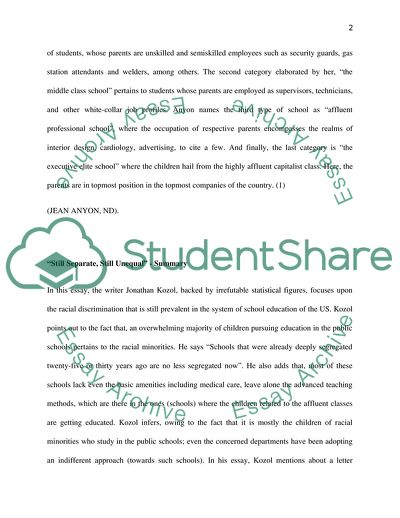Cite this document
(Schools Described by Jean Anyon and Jonathon Kozol Coursework - 3, n.d.)
Schools Described by Jean Anyon and Jonathon Kozol Coursework - 3. https://studentshare.org/education/1743837-analysis-essay
Schools Described by Jean Anyon and Jonathon Kozol Coursework - 3. https://studentshare.org/education/1743837-analysis-essay
(Schools Described by Jean Anyon and Jonathon Kozol Coursework - 3)
Schools Described by Jean Anyon and Jonathon Kozol Coursework - 3. https://studentshare.org/education/1743837-analysis-essay.
Schools Described by Jean Anyon and Jonathon Kozol Coursework - 3. https://studentshare.org/education/1743837-analysis-essay.
“Schools Described by Jean Anyon and Jonathon Kozol Coursework - 3”. https://studentshare.org/education/1743837-analysis-essay.


